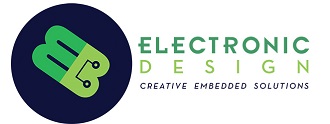A quick review of 2 PCB design tools by Ted Mawson, Senior Designer with MB Electronic Design
Diptrace is a schematic capture and PCB design tool that I’ve been using for over 4 years now. I’ve also used Altium Designer for various clients but, given the choice, I prefer Diptrace.
There are things that Altium can do that Diptrace can’t but my gripe with Altium is that they keep adding whistles and bells to their product – such as HDL synthesis tools – without addressing simple shortcomings in their base product; it’s like having a Swiss Army knife: it’s got scissors, a file, a knife, etc. but none of these are as good as a stand-alone equivalent and I don’t want to pay 10 times more just because all these things are packaged together and then be constrained to using the all-in-one tool. Here’s a few big things that push me towards Diptrace:
1. Cost
This is a quote from a 2013 Altium press release… “Altium Designer 14 pricing starts at $7,245 USD, including a one year subscription. Extended services and custom support packages are available from Altium..” My experience is that most users end up paying over $10,000 for a single user license that meets their needs and then, after the first year, there is a $2,500 per year maintenance fee required for support.
DIptrace costs $895 for the unlimited version, unlimited pins, unlimited layers. There are no annual support costs for Diptrace – their support forum typically gives good feedback to your questions within 24 hours.
2. Stability
OK, so I ‘hear’ you thinking, ‘Diptrace must be kinda flakey given it’s so much cheaper and Altium must be super-professional and stable; right?’ Wrong!
I have been using Diptrace for years on various PCs but mainly on Windows 7, 64 bit machines and I can tell you it is super-stable, there’s not many programs out there that you can say this about but Diptrace just doesn’t crash in my experience.
Two years ago I was trying to run Altium on a high-end Dell Latitude E6520, Windows 7, 64 bit, laptop with 8 Gigs of RAM and it would crash every day, sometimes losing the work I had done since my last save, sometimes even requiring a reboot. I tried a different machine, same experience. I called up Altium support who told me that I should try the in-version update to see if that cured the issues; problem: The annual maintenance contract had expired for the license I was using, ‘all’ I had to do is pay $2,500 and they would let me download the in-version update to see if that stopped Altium crashing. It was then that I demonstrated Diptrace to the client who agreed that $895 for an unlimited forever license was a better proposition than $2,500 per year for a problem product; that client has gone on to use Diptrace for multiple designs and they are very happy with it.
3. Usability
Inter-Sheet Connections The latest Altium training notes state that ‘The only way to pass signals between sheets in a project is with net identifiers.’ Diptrace supports this with schematic-only net identifiers that you can put anywhere in any sheet but they also have cool bus features that Altium does not.
Busses Busses were nothing but a graphical ‘feature’ in Altium until they recently added logical busses which appear to be restricted by the name you give the bus (such as D0..D7) but what do I do if I also want to add the net R/W to the bus? This is clumsy at best and is a feature that the free Eagle CAD tool has had for years. Diptrace has busses nailed. In Diptrace you can draw a bus, call it anything you want, then start drawing nets and, as you connect them to the bus, a pop-up asks if you want to create a new bus-net or connect to an existing bus-net with the full list displayed below. Diptrace has a bus-page connector; hook one of these up to your bus and then copy that page connector to another sheet, draw a bus leading from it, and as you wire nets to the bus, the pop up gives you the same create-new-or-pick-from-a list view of nets in the bus, you can even do overscore bars to create read/not write (e.g. R/nW). This has additional value in that the verification tools will warn you if there is a net in a bus that only has 1 end connected. Neat.
Footprints It’s true that Altium has a huge component library but the library editor is hard to work with. Diptrace comes with a 120,000+ parts library that includes most devices and its pattern editor feature is so good that I can create a complex pattern such as this 325-pin BGA very easily. When working with the latest components, it’s often the case that the footprints & patterns are not in your PCB tool library so it’s roll-your-own or stop work. I also have run into issues where patterns are incorrect or lacking in some way, especially new ones.
Summary
Bigger and more expensive is not always better; I understand that Diptrace is growing in popularity and has some major users now, I can’t confirm but Microchip and Seagate were 2 names I heard.



Leave A Comment
You must be logged in to post a comment.